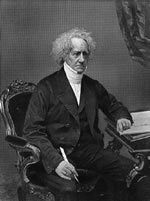 Educational Philosphy. The teacher is there to show
students how to do things they aren’t necessairly able to do (or maybe
didn’t even know it existed) and then encourage them to grow in their
abilities to use their new-found knowedge and skills to go beyond what
they are normally used to. Education, Schnitzer believes, is not
bringing the world down to your level but, rather, bringing you up out
of your level to something higher. Therefore, students are encouraged
to reach beyond what they feel comfortable with. They also are
enocuraged to solve by themselves the various problems that will arise.
Photography is all about problem solving. This doesn’t mean the
teacher is not concerned about students’ problems. It just means the
teacher will not sove the problems for the student. Advice is given if
asked for, though.
Educational Philosphy. The teacher is there to show
students how to do things they aren’t necessairly able to do (or maybe
didn’t even know it existed) and then encourage them to grow in their
abilities to use their new-found knowedge and skills to go beyond what
they are normally used to. Education, Schnitzer believes, is not
bringing the world down to your level but, rather, bringing you up out
of your level to something higher. Therefore, students are encouraged
to reach beyond what they feel comfortable with. They also are
enocuraged to solve by themselves the various problems that will arise.
Photography is all about problem solving. This doesn’t mean the
teacher is not concerned about students’ problems. It just means the
teacher will not sove the problems for the student. Advice is given if
asked for, though. | The Man Who Coined "Photography" Also in 1839, the term "photography" was coined by Sir John Frederick William Herschel [wiki], a british mathematician and astronomer (side note: his father, Sir Frederick William Herschel, also a famous astronomer, discovered the planet Uranus!) Herschel also coined the terms "negative" and "positive" in the context of photography, and also of the vernacular "snapshot." |  |
 | Stereoscopy The principle of stereoscopy (or 3D photo) actually preceded that of photography - it was described in as early as the 1500s by Giambattista della Porta [wiki]. In traditional stereoscopy [wiki], a pair of 2-D images - each representing a slightly different perspective of the same object, creates a perception of depth and tricks the brain into seeing a 3-D image. The invention of daguerreotype sparked interest in stereoscopy in the Victorian era. |
ليست هناك تعليقات:
إرسال تعليق